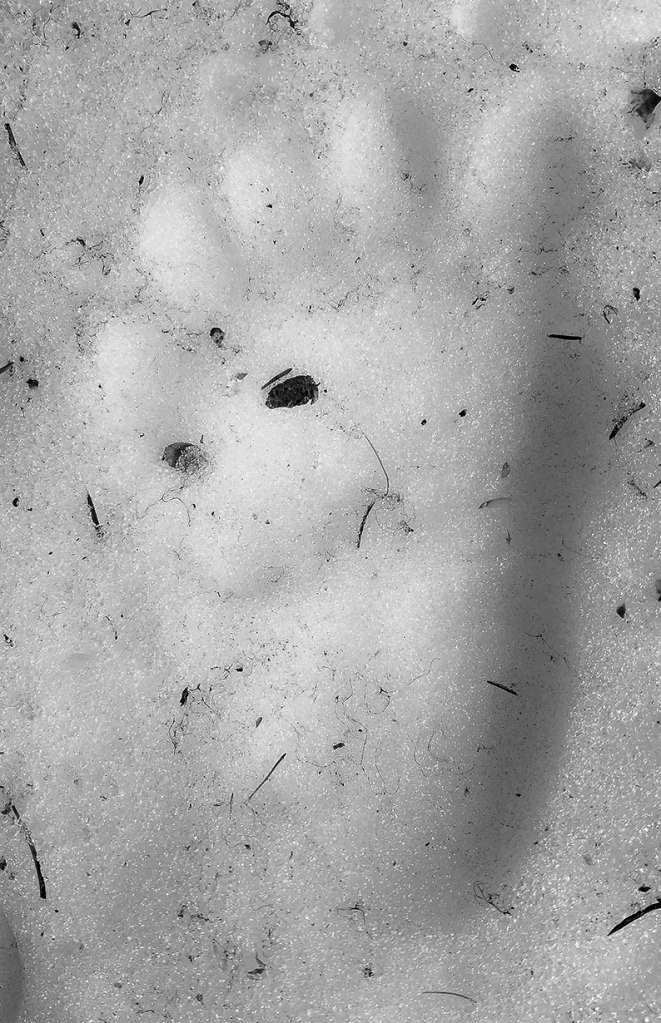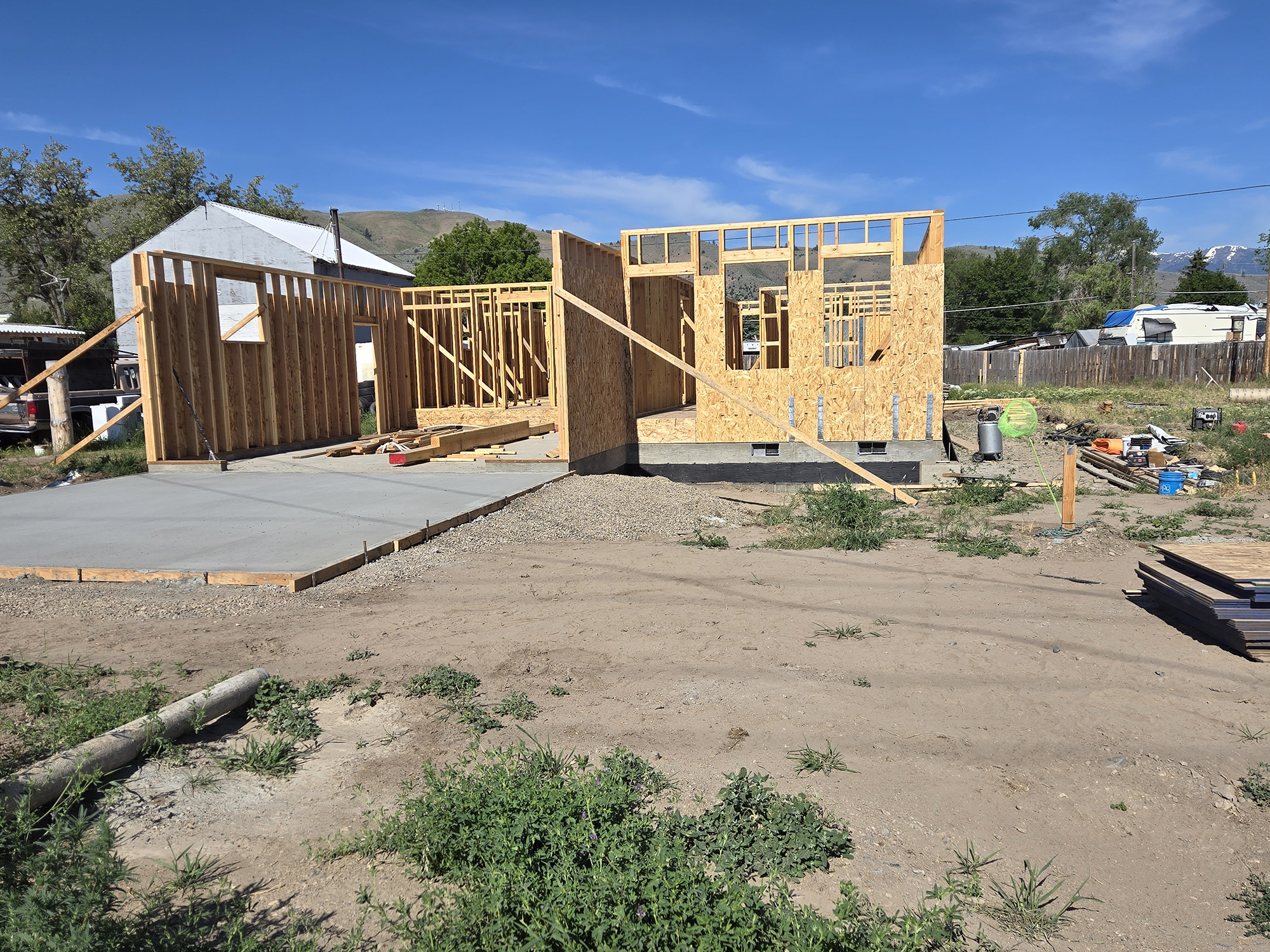The same photo … but different
Published 9:55 am Friday, May 3, 2019

- Lisa Britton / For WesCom News ServiceA bear track in the snow along Rock Creek Road, in the Elkhorn Mountains west of Haines.
I blame the sun.
Trending
For an object 93 million miles away — a rather considerable distance by our terrestrial standards — the sun can be as annoying as a mosquito orbiting your head at an altitude of less than half an inch.
I know the sun makes life possible on Earth and so I ought to be grateful for its essential rays.
But the big ball of gas can also make a heck of a nuisance of itself.
Trending
It can, for instance, render all but invisible the screen of a smartphone right when you’re looking at a photograph that you hope to replicate.
That was my predicament on a nearly cloudless Easter Sunday. And no matter how I tilted the screen or twisted my hand to shade it, I couldn’t quite get a clear look as I prepared to document the different in snowpack between this year and last at Eilertson Meadow in the Elkhorns.
This was my third attempt at the intriguing concept of repeat photography at the site along Rock Creek.
The idea is elegant in its simplicity, and compelling in its possibilities — you have an existing photo which you try to duplicate as precisely as possible.
The concept is often employed to show the significant ways a landscape changes over many decades or even a century.
But depending on the purpose, repeat photography can also yield interesting results in successive years — a somewhat more sluggish version of the familiar time-lapse photography that shows, for instance, snow piling up to prodigious depths in less than a day during a blizzard.
I was drawn to Rock Creek by happenstance that turned into habit.
When I hiked the snowbound road to Eilertson Meadow on April 21, 2018, I remembered, albeit vaguely, that I had made the same trip at about the same time the previous year.
It turned out to be the same April Saturday — the 21st in 2018, the 22nd in 2017.
Although I didn’t have a photo to consult last year, having swapped phones, but not all my pictures, in the meantime, I managed a pretty fair replica of the 2017 scene.
Not that it required much precision in camera placement to dramatically illustrate the difference — in 2018 the ground was almost bare, while in 2017 it was snow-covered.
Having assembled that admittedly meager portfolio I decided, some weeks back, that I would if possible visit Eilertson Meadow for a third straight April.
My wife, Lisa, and I hiked up there and, it being a Sunday, as I mentioned, rather than a Saturday, the date was once again April 21.
The biggest difference we encountered was one we also expected — we couldn’t drive as far up the road as I had in either of the previous two years.
In this case, however, the culprit was not a surplus of sun but rather of snow.
The subject of my repeat photos at Eilertson Meadow happens to be an automated snow-measuring station called, cleverly if ungrammatically, a Snotel. I had been tracking its data — available online at https://www.nrcs.usda.gov/wps/portal/nrcs/main/or/snow/ — and I knew the water content in the snow was more than twice what it had been in 2017.
The abundance of snow added about a mile to the round trip, making it roughly 6 miles all told.
Fortunately we were able to get along without having to strap on snowshoes. I rather suspected this would be the case. Spring snow tends to be pretty firm anyway, what with the cycles of daytime slush (thanks again to the sun) and nighttime frost transforming midwinter’s sugary powder into something with a consistency closer to partially cured concrete.
But the greater credit goes to the snowmobiles and other tracked machines that plied the road this past winter. Their treads compacted the snow, making it nearly as firm as bare ground.
(Except wetter. And more slippery.)
Despite my visual tussle with our galaxy’s obstinate star, I made a photo of the Snotel that closely mimicked last year’s. And again the difference was stark — the scene dominated this year, as in 2017, by snow rather than the dirt of 2018. The greater snow depth this year, compared with 2017, was obvious thanks to the split rail fence that surrounds the Snotel. In 2017 the snow didn’t even reach the bottom rail; this year it was near the top rail.
It was a fine day to walk through the woods. The spring norther that was ruining hairstyles and propelling grit into contact lenses down in the valley was, to our great satisfaction, impeded by the canyon of Rock Creek and by the dense timber. We could hear gusts roar now and again in the crowns of the tallest tamaracks and spruces, and see their branches bend, but the air was comparatively gentle at ground level.
Our snowy slog was enlivened by the tracks of a lone bear. The bruin had ambled on the south side of the road, never straying more than a few feet to either side, for about half a mile. Some of the individual tracks were almost perfectly preserved in the snow, the hind paws leaving the strangely human shape characteristic of ursine prints.
I know as much about dating animal tracks as I do about trigonometry — which is to say, nothing at all — but given the changeable nature of snow in spring I don’t think the bear prints, which had distinct edges rather than the blurred ones that melting snow creates, were very old.
I talked with Brian Ratliff, district wildlife biologist at the Oregon Department of Fish and Wildlife’s Baker City office, and he told me that bears, having recently left their winter dens, would be looking for green grass to gorge on.
We didn’t see much of that in the snowbound landscape, which perhaps explains why the bear was heading downhill, toward less snowy, and presumably more nutritious, prospects.








